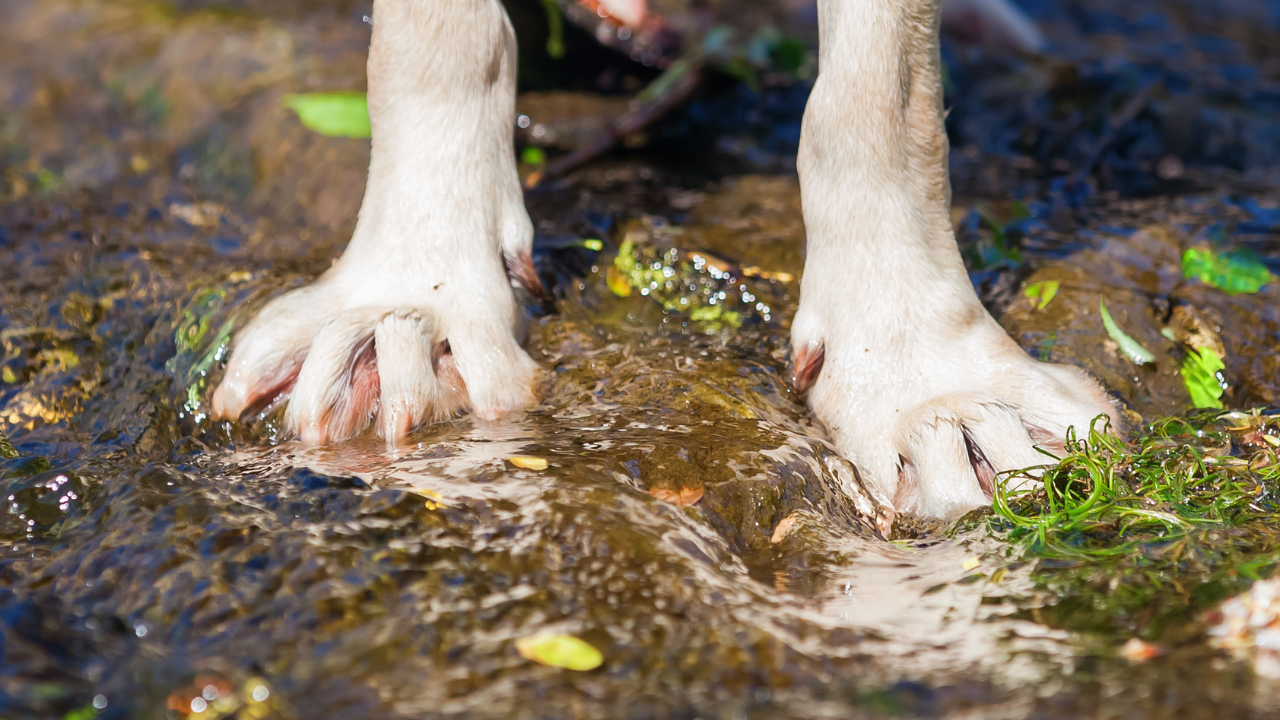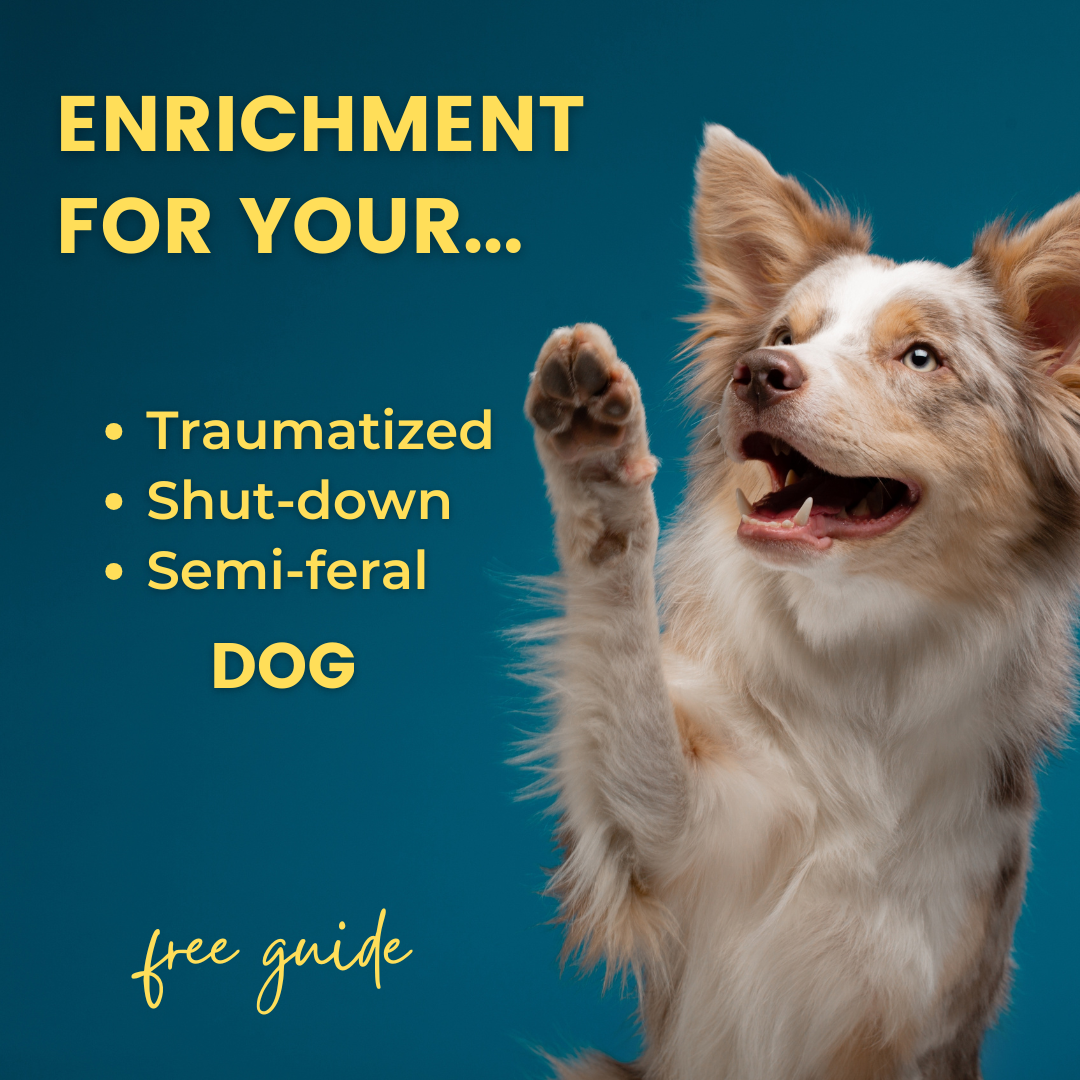No-Touch Paw Washing
Aug 01, 2022
Do you have a pup who tends to get muddy, but doesn't love having their paws touched? In this week's video I show you how we trained our dogs to use a foot bath, in order to wash mud off of their paws without touching them.
Set Up for No-Touch Paw Washing
Some version of a plastic tub or kiddie pool works well as a foot bath for dogs. You'll want a tub that is large enough for your dog to place at least 2 of their paws comfortably inside. Larger tubs or pools allow the dog to move around more, which facilitates paw washing. But small tubs can still be effective. Choose the height of the tub walls based on the depth of water you need, and your dog's size and comfort with stepping over the sides of the tub. Keep in mind that arthritic dogs might find it uncomfortable to step into a high-sided tub.
I recommend using a non-slip mat inside the tub, like a piece of a yoga mat. Surround the tub with mats or towels so that your dog can dry their paws as they exit.
Training Your Dog To Step Into The Tub
Here are some pointers for training your dog to step into the tub or pool you'll be using as a foot bath:
- No water in the tub to start: Unless your dog loves water, I'd recommend training the "step into the tub" behavior with a dry tub at first.
- Choose a "starter" object: Many fearful dogs might hesitate to approach a large tub or kiddie pool at first. Instead, you can train them to approach and step on a smaller, less intimidating object. I started with a frisbee, moved to a paint pan, and then to a plastic tub. Each item was a little larger than the previous one, and had higher sides.
- Get and reward any interaction with the tub: You have a few options for getting your dog to interact with the tub or starter item. You can lure your dog toward the tub by tossing a treat near it or into it. You can prompt them to check out the tub by doing something like tapping it with your finger. Or, you can just put out the tub and wait until they approach it, on their own, then give them a treat as a reward.
- Start small, and slowly increase the requirement for a treat: Many dogs won't put their paws into the tub right away. With my dog Pancake, I first reinforced just sniffing the "starter" object (the frisbee). Next, I used his "hand touch" behavior to get him to place his front paw onto the frisbee. The back paws came later, when we were working with the tub.
Add Water! (Slowly)
Once your dog is happily stepping in and out of the dry tub, it's time to add water. If your dog doesn't love water, you'll probably need to proceed very slowly. Here are some of the steps I used with my dog Pancake:
- Just enough water to dampen the mat: To start, I just poured a little water onto the yoga mat that lined the tub. I used just enough water to wet the mat, but not so much that there was any standing water.
- Water partially covering the tub floor: When Pancake was hopping in and out of the tub without hesitation when the mat lining the tub was damp, I added a little more water than the mat could absorb. This produced some puddles of standing water at the bottom of the tub.
- Water just covering the tub floor: This is just what it sounds like- at this stage, there was less than a quarter of an inch of water in the tub, but it was enough to completely cover the tub floor.
- Increase water depth in half-inch increments: I continued to increase the water depth in the tub slowly, until my dogs were happy walking in and out of about 4 inches of water.
Make Paw Wash Time Fun!
Include tricks or activities into paw washing time that are both fun for your dog, and help with the paw cleaning process. My big dogs enjoy running alongside me back and forth through the tub. "Hand touch" and "spin" in the pool also helped get their paws moving through the water.
If you try any of these paw cleaning games, we'd love to hear from you! Shoot us a message or email ([email protected]) and tell us what worked, and what didn't.
If you're looking for more training support for your fearful pup, check out our monthly training membership, or our one-on-one training program.



